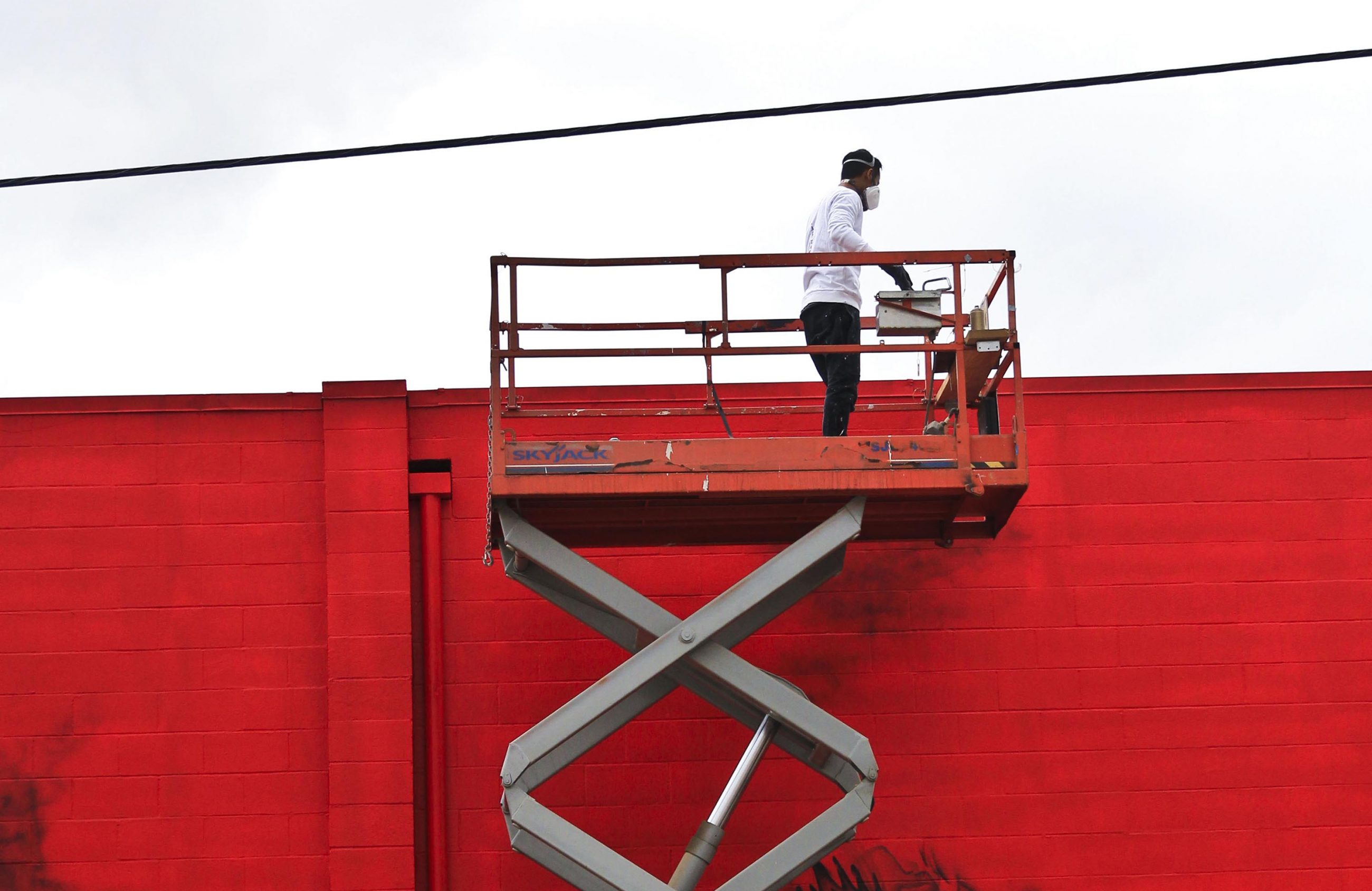Google “Oregon street artist” and you get just two results, both seemingly generated by bots. That puts us a bit behind Alabama (7 results) and Kentucky (4), well behind Washington (170,000) and California (161,000), and a nose ahead of Idaho and Wyoming (both 0).
Oregon is not exactly a national center for street art, the subversive guerilla art form that grew out of tagging and other illegal urban graffiti in the 1970s and became popularized by such documentary films as Exit Through the Gift Shop and Style Wars. We’re talking Banksy and Shepherd Fairey here, not cozy New Age murals of whales and owls.
So when the city of Eugene decided to put on a street art festival here this summer, it’s no surprise they looked elsewhere for much of the talent.
The festival, dubbed “Eugene Walls,” kicks off officially at the end of this month. It is part of a larger commitment, named the 20x21EUG Mural Project, to commission 20 local murals by leading artists in time for the International Association of Athletics Federations World Championships to be held here in 2021.
“That will be one of the largest sporting events in the world that year,” explains Isaac Marquez, the city’s interim cultural services director, who is leading Eugene Walls and is on the 20x21EUG committee. “So the context for this [art] project is the world. The track and field championships created an opportunity to do something bold. Strategically, I used that as the pivot point to run with this initiative.”
This will be the biggest community visual arts undertaking here since the summer of 1974, when University of Oregon art professor Jan Zach brought a half dozen internationally known sculptors to town to create art in public for the Oregon International Sculpture Symposium. Works done that summer include Bruce Beasley’s Big Red metal installation next to the Washington-Jefferson Street Bridge and the tall, flat, friendly looking concrete space-alien-like creatures, created by Hugh Townley, that can be seen in Alton Baker Park.
Marquez talked to Eugene art consultant Tommie Griffin when planning the mural project. Griffin, who was involved with the 1974 symposium, gave this advice: “Go big!”
And so, Marquez did. The street artists arriving here to create work in the coming week are known around the world. They come from Paris, from Argentina and Brazil, from London and from Spain. They have long resumes. They show work in international galleries and command high prices. And they’ll be working in public on murals that will stay here for years after they, the artists, are gone.
Among the muralists who will be here is New Yorker Dan Witz. He’s made a name for himself over the past four decades in both the street art scene and the art gallery world with a combination of fine traditional oil painting technique and the willingness to risk arrest while installing his work in public places.
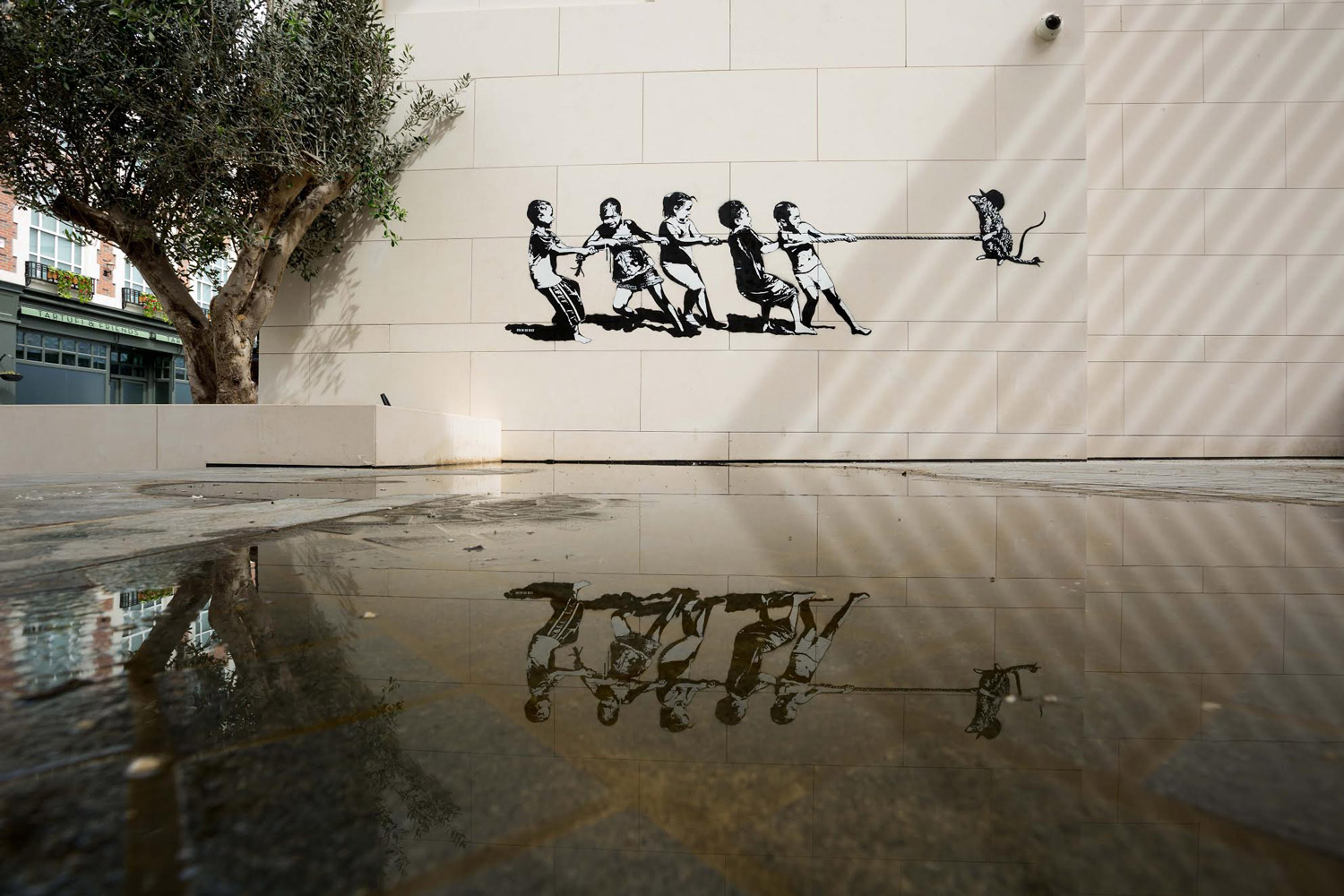
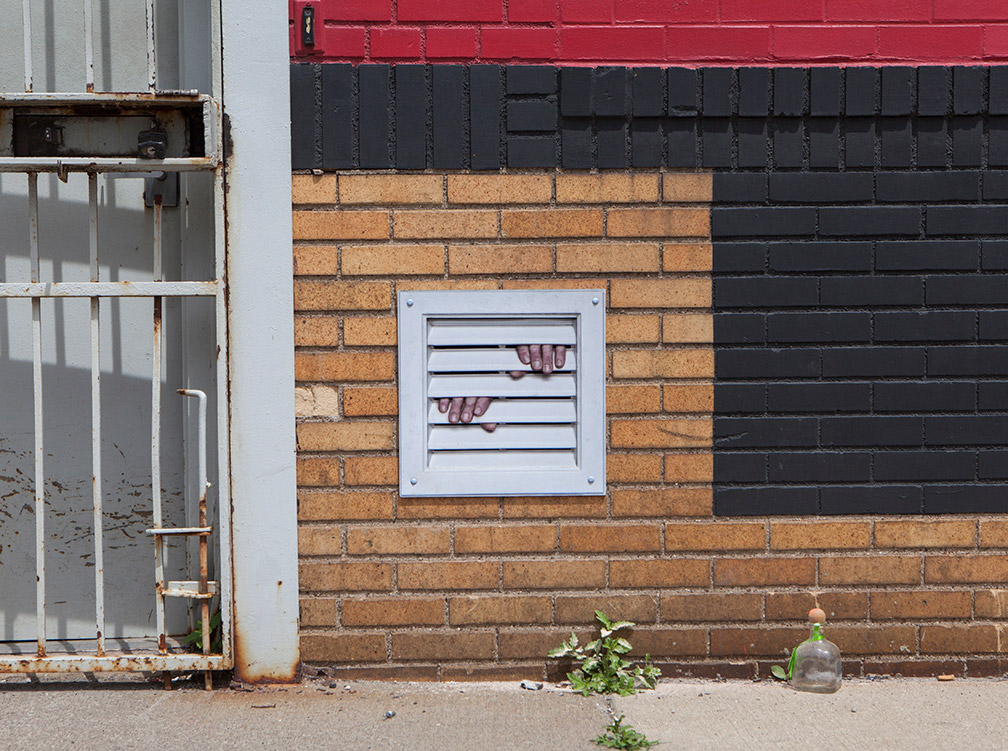
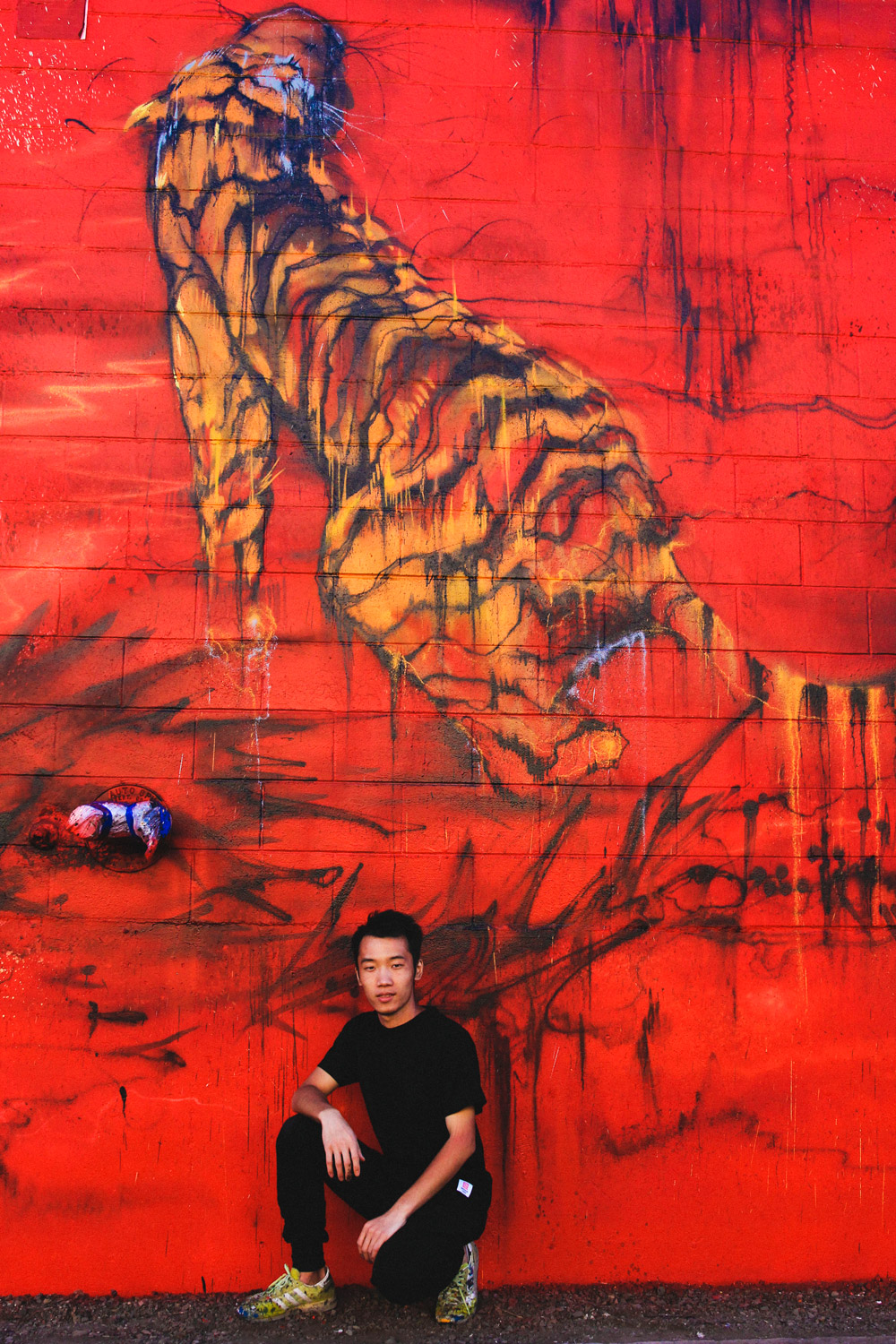
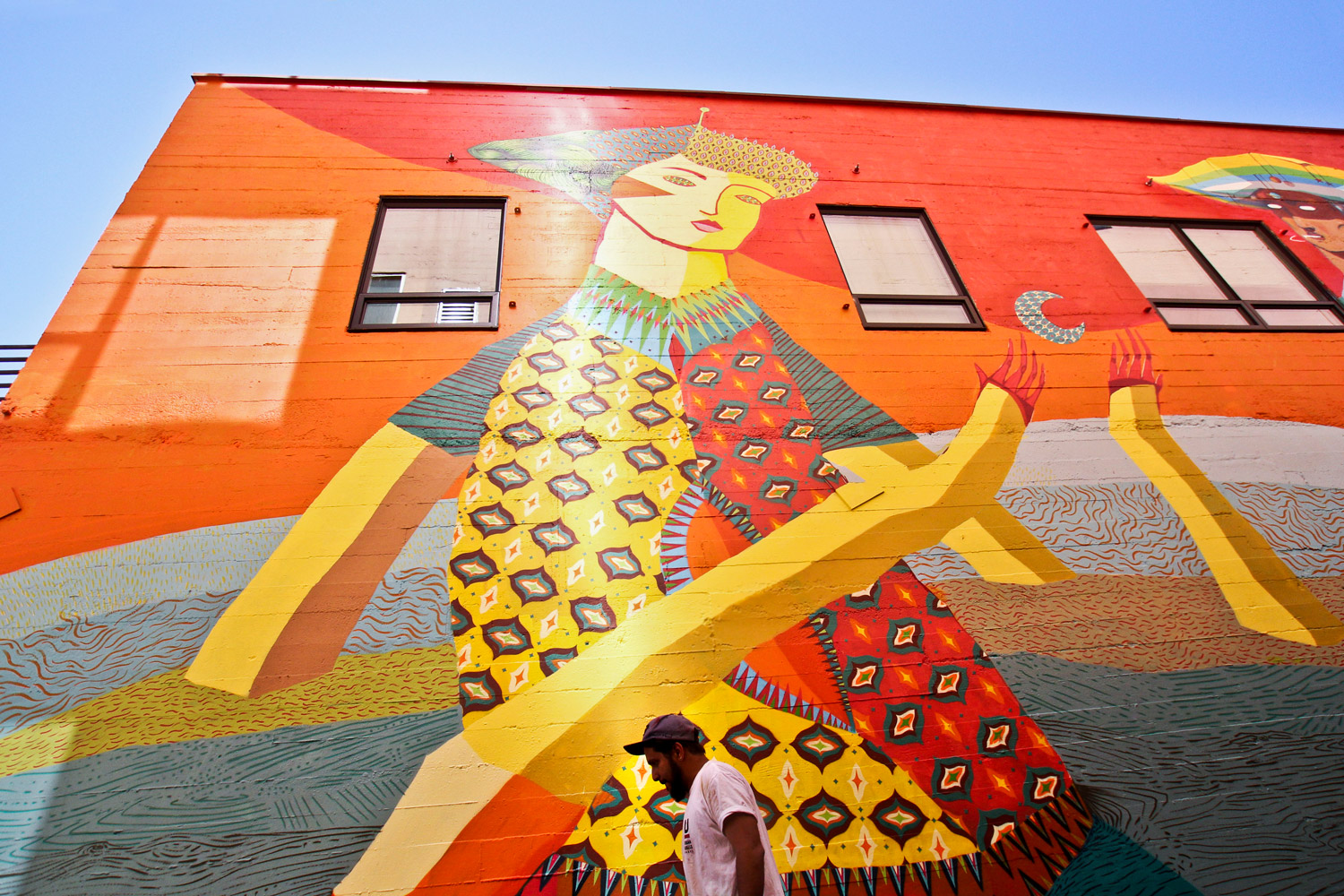
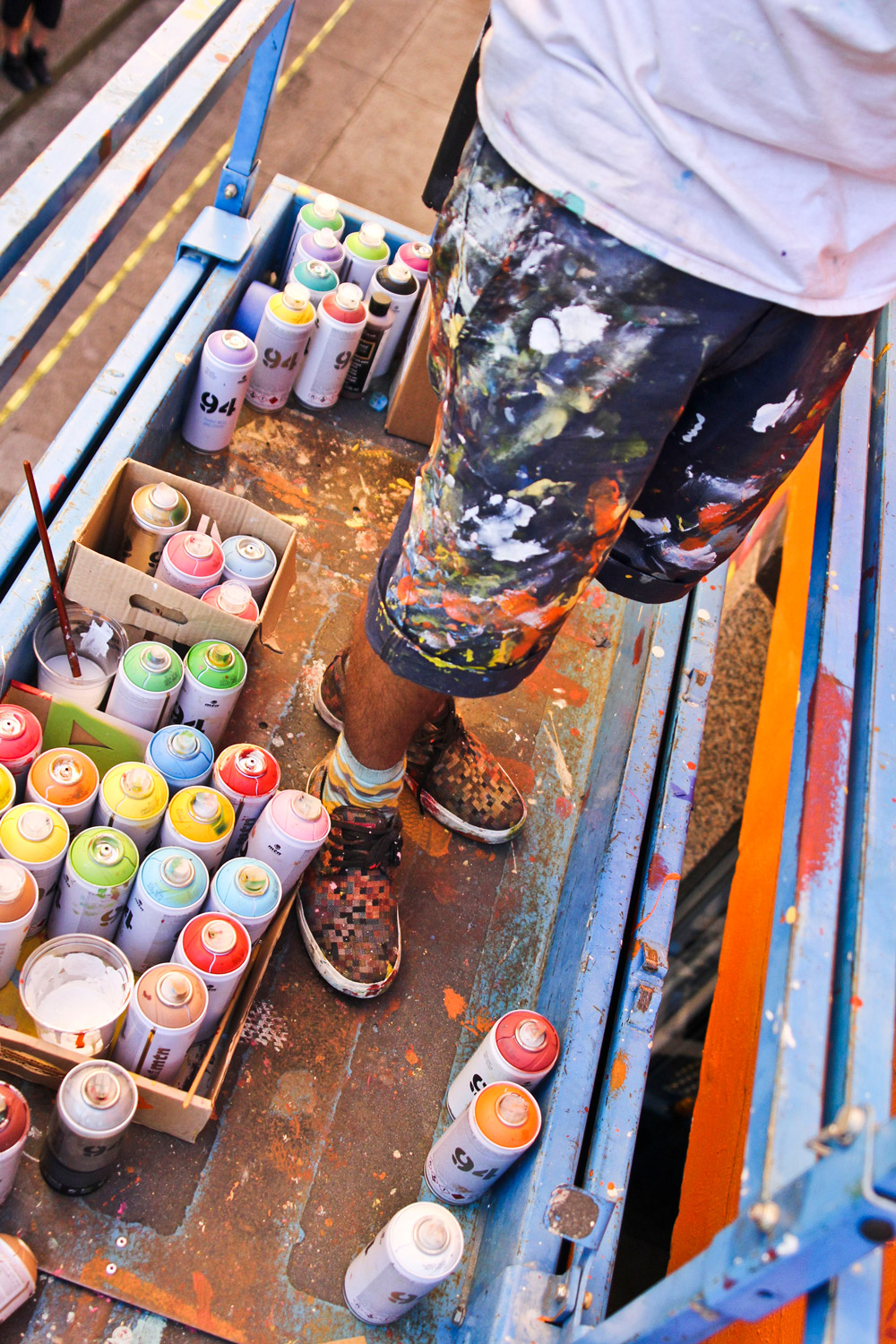
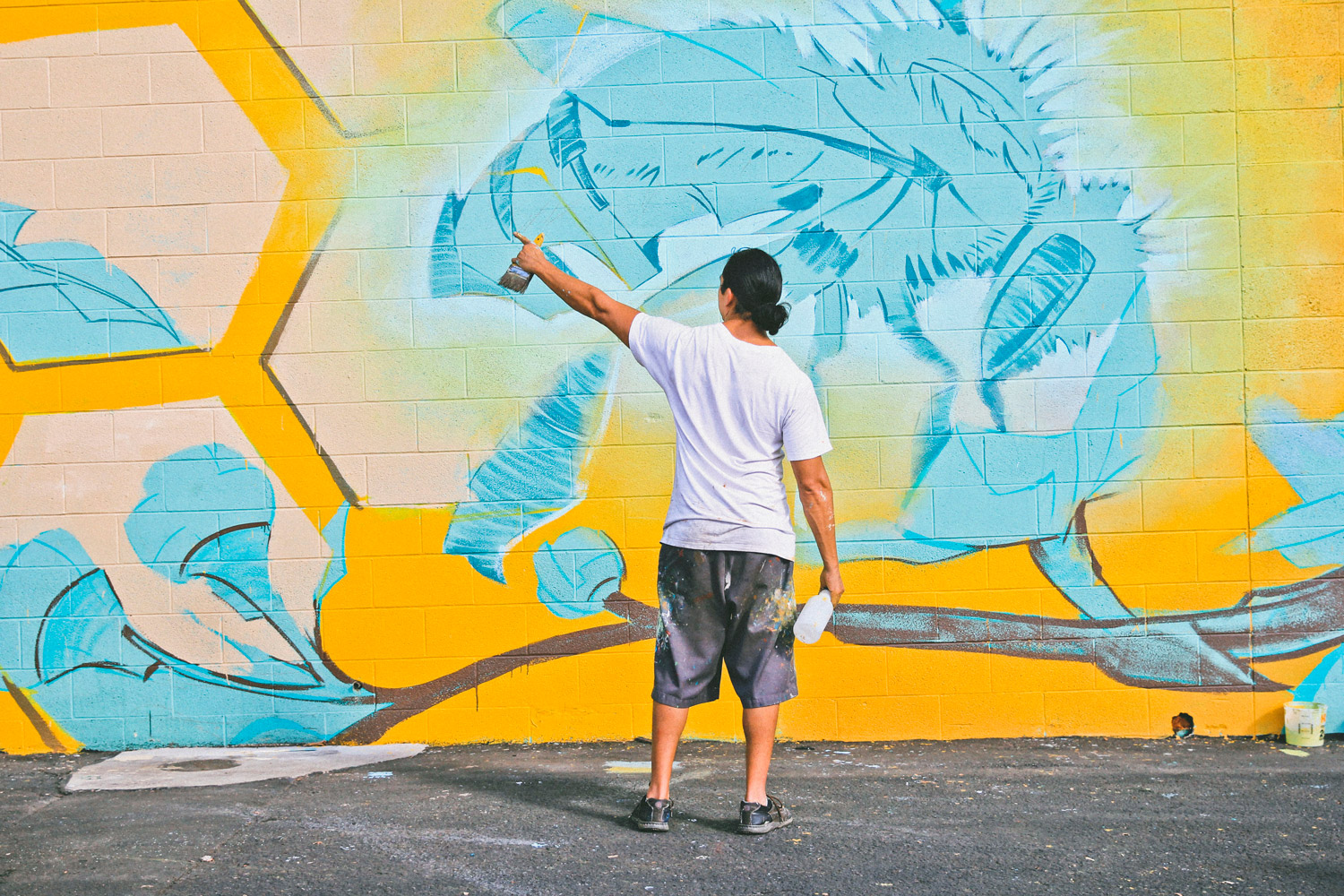
Witz is a hybrid. While he continues to place work on urban walls without, let’s say, seeking a permit, he also shows in galleries around the world: New York, of course, but also San Francisco, Los Angeles, Berlin, London, Amsterdam, Toronto and Vienna.
Many artists in history have had parallel art practices, Witz notes in a telephone conversation from his Brooklyn studio. Rembrandt did etching as well as painting. Andy Warhol made films as well as prints. In his own case, Witz says, he’s learned technical skills for his gallery work from making street art.
He burst quietly on the street scene in the 1970s with carefully painted life-size hummingbirds that appeared like little green jewels on walls in Manhattan. At first, Witz carefully painted each one on the spot, using all the traditional technique he learned studying oil painting at Cooper Union.
Witz soon realized that such a degree of craft left him exposed to police attention for too long; these days he makes his images in the studio on plastic or other materials and then installs them on-site in a hit-run process that can take less than a minute.
More recently his work has involved references to imprisonment or confinement. In about 2008 he started an informal series he calls “What the Fuck?” showing people locked behind, say, a ventilation grate next to a freeway ramp or on an apartment wall.
That led to a 2012 project called Wailing Walls with Amnesty International in Frankfurt, Germany, that told the stories of eight different injustices in eight different countries.
Witz, a vegan, took a similar approach in Empty the Cages, a 2014 project for People For The Ethical Treatment Of Animals in London, in which the caged victims were animals.
In his four decades of work as a street artist — he turns 60 this fall — Witz has encountered police numerous times but has never been arrested. That’s in part because he realized early on it was safer to get right in and right out. It’s also because he’s an older white guy and benefits, as he notes, from profiling.
He also understands urban camouflage: These days he wears high-visibility neon-bright clothing and hard hats, passing at a casual glance for an official city worker.
But it’s also because his art, while challenging, is subtler in its approach than it is in-your-face.
“I’m not spray painting on walls,” he says. “I’m doing something that is fairly benign — and people are happy to see it.”
Unlike some of the other artists coming to Eugene, Witz hasn’t been assigned a particular wall for his work. Instead, he says, he’ll be installing 15 to 20 pieces in “undisclosed locations” around town.
Here are the other artists coming to the party, and where (if it’s known) they will be working:
Blek le Rat. The French street artist is known as the grandfather of stencil graffiti, a technique he adopted because its on-site speed helped him evade the Paris police. He’s often cited as a major influence on Banksy, who has even been accused of copying his work. Le Rat — “the Rat” — is expected to create a mural at 100 East Broadway as well as smaller works at five or more other locations.
Telmo Miel. This duo from the Netherlands — Telmo Pieper and Miel Krutzmann — is behind large-scale hyper-realistic/surrealistic murals in big cities around Europe. Both artists are strong in traditional figurative technique, but their images are layered in complex and intriguing ways. They will be working on a wall at 198 West Broadway.
Hyuro. The Argentine-born painter now lives in Valencia, Spain, and is known among other things for her large monochromatic depictions of women, sometimes using sequential images and patterns.
Jaz. Born Franco Fasoli, Jaz learned his trade painting backdrops at the Teatro Colón opera house in Buenos Aires before evolving his own style of street graffiti there in the 1990s. Jaz is to work on a mural on the south wall of the McDonald Theater at 1010 Willamette Street.
Hush. The London artist incorporates Japanese influences, from anime to geishas, in his work, which has a high-fashion sheen. He’s to work on a mural at Falling Sky Brewing House at 1334 Oak Alley.
These four artists have completed their murals already:
Beau Stanton. A California native who studied illustration at the Laguna College of Art and Design, Stanton moved to the Red Hook neighborhood of Brooklyn in 2008; his work draws on religious and nautical imagery. He completed his work last year, a 3,500-square-foot mural on the McDonald Theater.
Acidum Project. A collective from Fortaleza, Brazil, founded by artists Robézio Marquez and Tereza De Quinta, who also do tattoo art. They have completed a mural named Sidewalk Games (and Kindness)/Jogo de Calçada (e Gentilezas) in the alley next to Cowfish at 62 West Broadway.
Steve Lopez. The Los Angeles muralist is a UO art graduate; he studied here with sculptor Dora Natella and design theorist Leon Johnson and showed at the now-defunct Fenario Gallery downtown. He’s also illustrated covers for Eugene Weekly. Lopez incorporates images of wildlife and women in his highly stylized work. He’s completed a mural on the Wildcraft Cider Press house at 254 Lincoln Street.
Hua Tunan. The Chinese spray-paint artist’s enormous, vivid mural on the outside of Vistra Framing and Gallery at 411 West Fourth Avenue shows a huge battle between tigers and a dragon in a sea of red. It also has the distinction of being the first to be vandalized by another tagger. Hua completed his work last month. Within days it was defaced, or perhaps complemented, by a late-night spray painter who wrote on the mural; it’s since been repaired.
The list of commissioned artists also includes local muralist Ila Rose. Having seen an announcement of the project, she demanded from the Eugene Walls steering committee to know why local artists weren’t included. “I was kind of disappointed in the lack of local involvement,” she says. “It would be a really good opportunity for us to share our work with the visiting artists.”
A bit to her surprise, Rose — whose work has more a New Age than a guerilla esthetic — was invited to create her own mural for the project. Rose has done just one previous mural, on Blair Boulevard between Fifth and Sixth Avenues. For the Eugene Walls project, she proposes a large image of a woman with medicinal plants — a “healer,” she says — along with owl and snake imagery.
Then came a bump. The whole surface of the 2,300-square-foot wall she was initially assigned to paint was corrugated steel, a difficult surface on which to work for a two-dimensional image. “I’m just going to approach it as if it were a flat wall and hope it works out,” she said. “I said, ‘You’re giving me a really challenging wall.’ They said, ‘Good luck.’”
Late Tuesday, though, the project decided to give her a different — and flatter — wall to paint on, also in the Whiteaker neighborhood.
Eugene Walls will cost the city about $56,000, the city says, with most of the money going for transportation and supplies for the artists; funds will come from the Cultural Services Division and the city parking fund.
Another $20,000 has been raised in donations from businesses supplying wall space as blank canvases and from other donors. Securing enough walls hasn’t been easy, as the city requires a five-year commitment from the building owner to maintain the art. That caused one landlord who had initially agreed to a mural to drop out of the project.
It also shines the harsh light of irony on a project trying to institutionalize the raw energy of urban street art on the walls of a quiet Northwestern town. Marquez revels in the contradiction. “We’re convincing these artists to come here and sign our five-page legal documents!” he says.
There are also wilder possibilities. Some of the artists involved with the Oregon International Sculpture Symposium partied pretty hard while they were here. Asked a few years ago about his experience in Eugene, sculptor John Chamberlain laughed that he couldn’t remember. “I drank my share and your share and a few other people’s shares that summer,” he said.
Police were called out one night when Chamberlain, a friend of Andy Warhol, showed a pornographic film he’d made as his formal artist presentation at City Hall. (The cops declined to stop the show.)
Marquez just smiles at the possibilities for turning a pack of urban street artists loose on the streets of Eugene. “There is a little bit of irony here,” he says.
Here are some events connected to Eugene Walls:
Eugene Walls kicks off informally on Sunday, July 30, with Sunday Streets, the city’s occasional celebration of public space, when downtown streets will be closed off to traffic from noon to 4 pm.
An artist reception, with the international and local artists from the mural project, will run from 6:30 to 8:30 pm Wednesday, Aug. 2, at the Jordan Schnitzer Museum of Art on the UO campus.
Finally, Lane Arts Council’s First Friday ArtWalk will feature a walking tour of murals starting at 5:30 pm Friday, Aug. 4. Guided by Paul Godin of the mural project, the tour begins at the corner of West Broadway and Charnelton Street and will feature short talks by participating artists.
The intersection of West Broadway and Charnelton Street will be closed that evening for two concerts. Tony Glausi and band will play from 6 to 7:30 pm, and Portland-based Chanti Darling will play from 8 to 10 pm.
